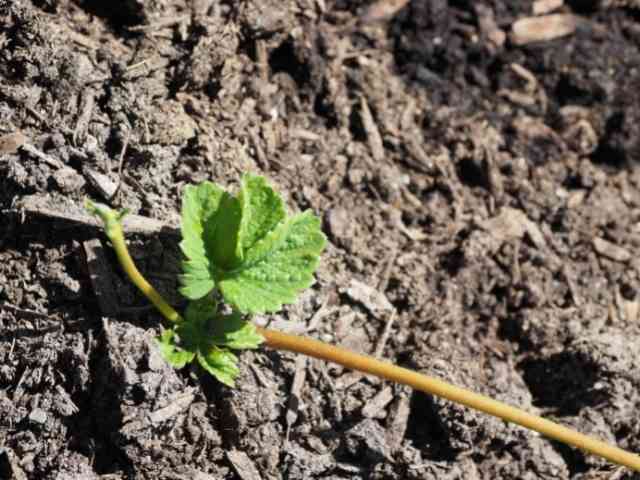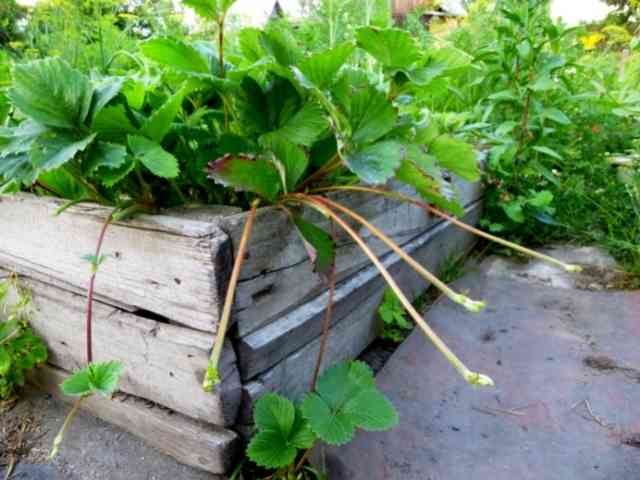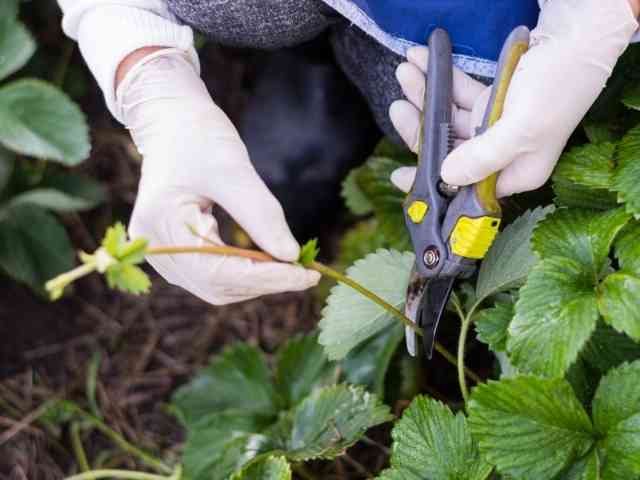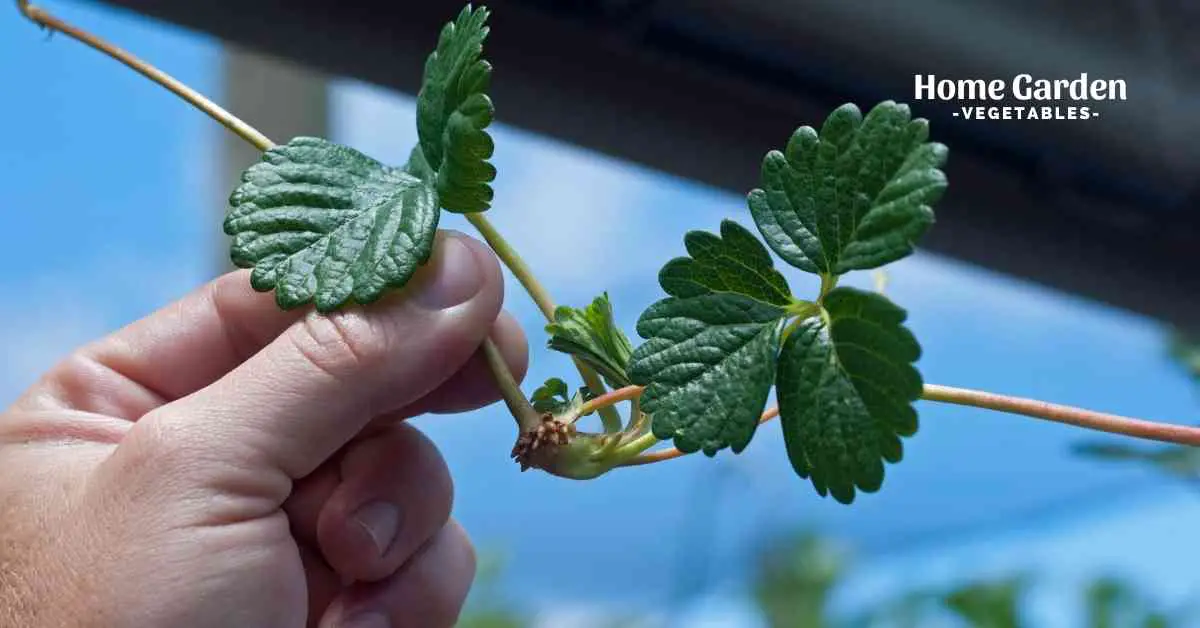It is possible for strawberries to “reproduce” using seeds or runners. strawberries have runners, which are long horizontal stems that generate “baby” clone plants at the end of their long stems.
There are several baby plants (genetic copies of their mother plant) that form roots and spread forth from the mother plant. Strawberry runners are called “stolons,” but to make things easy, we’ll call them “runners.” Strawberries may be successfully grown in your yard using runners.
Reader Poll: What online courses would interest you?
There are several places to get strawberry runners, including nurseries and online. Rootless crowns are offered in bundles of two or three.
Throughout summer and fall, these uninspiring-looking plants yield some of the most delicious fruits. Nurseries will begin selling these runners within the next several weeks.

Why?
Because planting them in the winter (between June and October) necessitates this. If you reside in the subtropics, you should grow strawberries in the fall. In April, the crowns of the plants will begin to grow new leaves.
Subscribe to our newsletter!
If you purchase your runners from a reputable nursery or mail-order supplier, you may be certain that they were cultivated virus-free. They are referred to as “certified runners” in the running community. Certified Strawberry Runner Growers remove all the blooms and fruit from the mother plants to encourage them to give forth runner plants.
You must have your strawberry runners ready for planting as soon as possible after receiving them. They may be washed and their roots can soak up the water. Leaves with discoloration should be removed by pinning them back. Cut the roots to a length of around 10cm. Plant your runners the same day you prepare them. If you can’t get to them right away, put them in the refrigerator and plant them as soon as you can, ideally the same day.

Best Places Are To Grow Strawberry Seeds
The following are the two most important factors to consider when deciding where to grow strawberries:
- location with adequate ventilation
- exposure to sunlight
It is possible to cultivate them in beds, pots, and baskets. In addition to keeping the fruit off the ground and away from dirt and slugs, their modest size makes them highly popular in vertical gardening.
You must put your runner plants at the proper depth. If you plant your runners too deep, the crown (the part from which the leaves grow) may decay and become unusable. Soggy socks and shoes are a no-no for strawberry lovers! The roots will be exposed if you place your runners too shallowly. With exposed roots, the plant’s establishment may be compromised. When planting, do not allow the roots to fold over or double back on themselves.
How To Plant Strawberry Runners?
Setting out the precise depth for the runner planting is critical. Runners that are planted too deeply will have their crowns (the part where the leaves develop) decay. It’s important to keep in mind that strawberries detest having their feet wet. However, if you plant your runners too shallowly, the roots will be exposed. With exposed roots, the plant may not be able to grow properly. When planting, be careful not to allow the roots to fold over or double back.
An excellent suggestion for planting runner plants is to make mounds of soil and place them in rows. During periods of heavy rain, this will assist to ensure that they have enough drainage. Mound the earth into long ridges around 10cm high to do this. With your hands, gently push the earth together as you mound it. The mounded ridge method is not required for planting in smaller raised beds or containers
Check the strawberry runner package to learn how far apart they should be spaced. Typically, it’s between 30 and 40 centimeters. Take into consideration how far apart the strawberries should be placed. Spread the roots out over the ridges as you go so that the runners may rest on top of them.
Add extra dirt to the area around the roots now. If you want to aid with drainage, keep the ridge in a mounded form. If you see that the crown of the runner is resting on the soil’s surface, you’ve done your job correctly.
They should be hydrated well at this stage. To aid their establishment, use a liquid fertilizer. For root development, any fertilizer with seaweed in it is an excellent choice. Once they’ve established themselves and grown, you may now let them rest.
Harvesting
In contrast to other fruits, strawberries only ripen on the plant. You should only select strawberries after they’ve developed a lovely red color.
Tips For Developing Strawberry Runners From The Leaf, Root, And Fruit Of The Plant
- Summer and fall harvests for a five-person family need around twenty-five or more runners to be enough.
- Different varieties produce at different times. A wide range of fruiting dates is available, from October to May. We’ve planted four distinct types (Adina, Low on, Red Gauntlet, and Tioga) so that we may have a continuous harvest for eight months out of the year!
- The leaves of strawberry plants should be kept dry to keep them from wilting. 3. Instead of watering the foliage, try drip irrigation or directing the hose to the soil surface.
- Poor pollination is often the cause of strawberries with unusual shapes or colors. Bordering your strawberry crop with bee-attractive blooming plants like borage is a good idea.
- The strawberry reproduction cycle will continue with your plants since they were originally grown from runners. ‘ We propose removing any runners that seem to stimulate more fruit and a larger crop.
- Strawberry plants appear to perform their best for only two to three years at a time. So it’s a good idea to undertake some replanting at this stage. This method should provide a larger and more flavorful crop.

Conclusion
Multiple runners emerge from the soil surface of an established strawberry plant. Each runner includes a little plant at the end that may be rooted and grown on to generate additional plants.
Plants’ first two years of existence are dominated by the development of fruit, not runners, which drain the plant’s energy resources. Plants may be multiplied from year three onwards by using part of the runners. Avoid using weak or diseased plants’ stems when propagating your runner plants! If you don’t intend to get rid of the parent plants, restrict the number of runners to five per plant.

